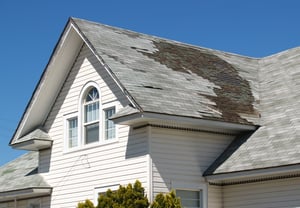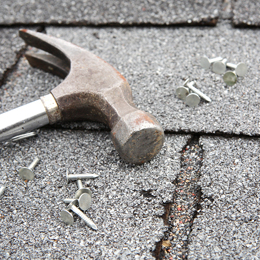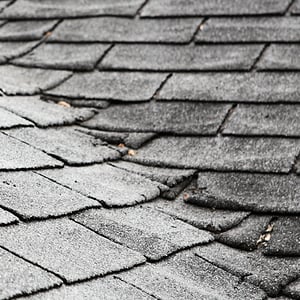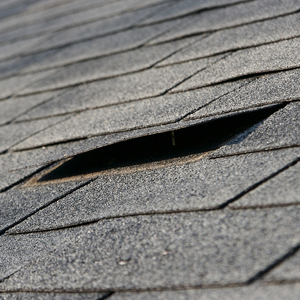 An essential part of your home is your roof. Your roof keeps your family and possessions safe from Mother Nature. However, because it can be difficult to see it from the ground, you may not know when it’s the right time to replace your roof.
An essential part of your home is your roof. Your roof keeps your family and possessions safe from Mother Nature. However, because it can be difficult to see it from the ground, you may not know when it’s the right time to replace your roof.
In the United States, asphalt shingles are the most common product used on homes. Unfortunately, asphalt shingles don’t age at the same rate. The aging rate of your shingles depends on two things: 1.) the shingle’s quality and 2.) the weather. Certain weather conditions can cause more damage to the shingles, aging them more quickly. The best way to gauge how long your shingles will last is to check the manufacturer’s warranty.
As your roof ages, here are some things to watch for.
1. Loss of granules from the shingles.
As shingles age, they lose their granules because the weather loosens them, and the shingle gets harder. If you occasionally notice some loose granules, there’s no need for alarm; however, if you see a more significant number of granules in your gutters or around the house, it may be time to have your roof inspected.
2. Gaps between the flaps of the shingles.
Experts recommend that the space between your shingles should be 1/16 of an inch; this is about the size of your pinky finger. If the space is significantly larger, the shingles on your home are deteriorating and may need replacing.

3. Rounded corners on your shingles.
New shingles are rectangular with distinctive, sharp corners. The sharp corners will become round as different weather conditions take their toll. You’ll start to see this when the shingles are approaching their maximum life expectancy.

4. Cracked shingles.
As the tar on the shingle starts to deteriorate, the flaps may move up and down from the wind, causing them to crack. If they become very brittle, they may even break off. If you’re walking or working in your yard and notice shingle pieces on the ground around your house, consider having your roof inspected.

5. Fading and discoloration.
Many factors can cause your roof to fade or discolor, including:
• UV rays
• Algae
• Moss
• Dirt
• Acid rain
• Poor attic ventilation
These are some visible signs that your roof is deteriorating. You may also want to look closer at your roof in the spring or fall when you clean out your gutters or during the holidays if you put up lights around your roofline. Looking from the vantage point of a ladder is usually the safest way to do this. Depending on the pitch of your roof, getting on it may not be a safe and wise decision.
If you see problems with your roof and its shingles, contact a reputable roofing contractor in your area. They’ll have the skills and appropriate equipment to inspect your roof safely.
If you recently replaced your roof or are considering doing it soon, contact your insurance agent. Your agent will want to update your policy and may even change the coverage for your roof from actual cash value to replacement cost. Replacement cost provides the coverage you need to replace your roof. In contrast, actual cash value provides coverage for the value of the roof at the time it’s replaced, taking into account the depreciation of the asphalt shingles. A deductible may apply.
It’s also important to tell your insurance agent what type of material is used on your new roof. Slate, steel, and tile roofs have a much longer life expectancy than asphalt shingles. And while a new steel roof may be eligible for a hail-resistive discount, it may also carry a cosmetic exclusion.
Do you have any suggestions or information you’d like to share? I’d love to hear from you. Please share them in the box below.
This article is intended for general educational and illustrative purposes only and should not be construed to communicate legal or professional advice. Further, this article is not an offer to sell insurance. Please consult with your licensed insurance agent for specific coverage details and your insurance eligibility. All policies are subject to the terms, conditions, limitations, definitions, and exclusions contained therein.





